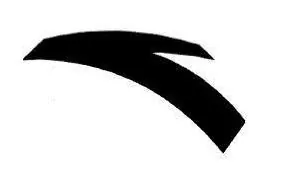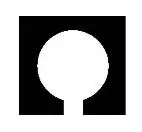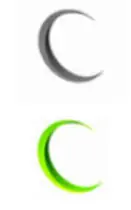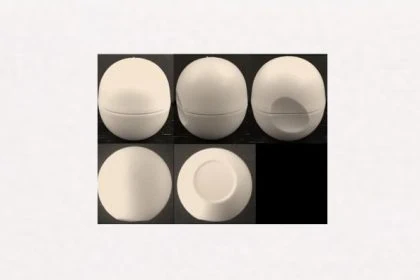A figurative mark in the European Union must have sufficient distinctive character, but must not be descriptive either. Accordingly, geometric shapes and forms of representation with lines and semicircles for trademark registration are frequently rejected. We give an overview in case law.
Particularly in the case of trade mark design based on basic geometric shapes, such as lines, angles and semicircles, there is a need for particular evidence to support the assumption that the relevant public will perceive the design as a trade mark. Article 7(1)(b) of Regulation No 207/2009 provides that trade marks which are devoid of any distinctive character are not to be registered.
However, the decisive factor in acquiring distinctive character is that the goods or services covered by the mark are different from those of other companies. According to the case-law, this is hardly possible with simple geometric basic shapes, since such signs are regarded only as decorative elements.
Geometric shapes and lines are often rejected
Already in 2009 the desired brand entry of a half smiley smile of the Smiley Company was rejected. The trade mark applicant argued that the relevant public regarded the mark in question as ‘half the mouth of a smiley‘ and that that was already registered as Community trade mark No 517 383. The fact that the trade mark in question consists of part of a trade mark already registered is not relevant to the desired trade mark registration, but the CJEU ruled (September 2009, T:2009:364).
 Neither was the trademark registration of a representation made of lines with bricks of Azur Space Solar Power GmbH (Germany) recognized. The conical lines and the bricks making up the mark applied for are the main characteristics of that mark, explained the company, from which it derives distinctive character. This was rejected by the CJEU ( November 2016, T:2016:675). There are no elements which distinguish that representation from other representations of lines.
Neither was the trademark registration of a representation made of lines with bricks of Azur Space Solar Power GmbH (Germany) recognized. The conical lines and the bricks making up the mark applied for are the main characteristics of that mark, explained the company, from which it derives distinctive character. This was rejected by the CJEU ( November 2016, T:2016:675). There are no elements which distinguish that representation from other representations of lines.
Anta Co. Ltd (China) also failed with the desired trademark application of two crossing lines with an acute angle. The CJEU found that the mark applied for did not contain any element which was visually striking (April 2017, T:2017:253).
In this context, the comparison with figurative marks of the two shoe manufacturers Vans and Deichmann is interesting.
 In 2015, the desired trademark registration of Omega International GmbH (Germany) was also rejected (December 2015, T:2015:928). The Court held that, in perceiving the sign applied for, the consumer will assume that it is merely a machine-readable sign, such as a barcode or a product security label, since the mark was applied for in respect of bulk consumer goods in the cosmetics, food and beverage sectors.
In 2015, the desired trademark registration of Omega International GmbH (Germany) was also rejected (December 2015, T:2015:928). The Court held that, in perceiving the sign applied for, the consumer will assume that it is merely a machine-readable sign, such as a barcode or a product security label, since the mark was applied for in respect of bulk consumer goods in the cosmetics, food and beverage sectors.
Semicircles must not be too simple
 This was also the case for the two red semicircles for which Coesia SpA (Italy) had filed an application in vain as a Union figurative mark. The company filed a complaint and drew the attention of the specialist public to the mark applied for.
This was also the case for the two red semicircles for which Coesia SpA (Italy) had filed an application in vain as a Union figurative mark. The company filed a complaint and drew the attention of the specialist public to the mark applied for.
The European Court (CJEU) rejected this (March 2019, T:2019:199). The simple figurative elements do not convey a message as to the commercial origin of the goods concerned, irrespective of the attention of the relevant public.
 However, the trademark registration of two different colored semicircles of Novartis AG (Switzerland) was confirmed by the CJEU (December 2016, T:2016:749). The Court of First Instance recognised the interplay of light and shade in the colour scheme and considered the curves, which are of different thicknesses and slightly twisted, to be sufficient characteristics for the necessary distinctive character.
However, the trademark registration of two different colored semicircles of Novartis AG (Switzerland) was confirmed by the CJEU (December 2016, T:2016:749). The Court of First Instance recognised the interplay of light and shade in the colour scheme and considered the curves, which are of different thicknesses and slightly twisted, to be sufficient characteristics for the necessary distinctive character.
Figurative mark or colour mark
Anyone who now plans to acquire the necessary distinctiveness for geometric shapes by means of a combination of colours should observe the case-law on this subject.
An important judgement in the border area between figurative and colour marks and also position marks was recently made by the European Court of Justice (ECJ C:2019:261: Figurative sign of a colour combination is not a colour mark). A sign showing an ordered colour combination cannot be applied for as a colour mark, the ECJ ruled. If the sign for which registration is sought is composed of a combination of colours claimed in the abstract and without contours, the graphic representation of those colours must be systematically arranged in such a way that they are linked in a predetermined and consistent manner.
Would you also like to protect your trademark or brand?
Our lawyers are experienced in trademark and design law, national and international law.

Sources:
Judgements as linked in the text







Leave a Reply